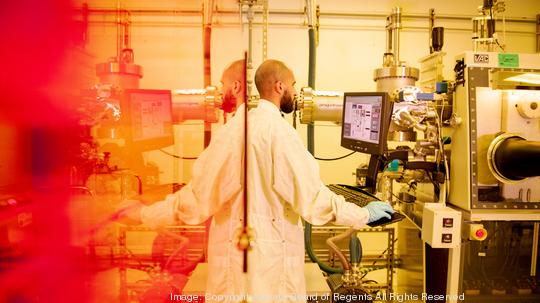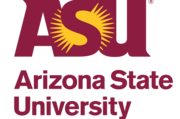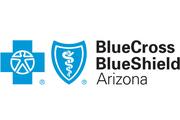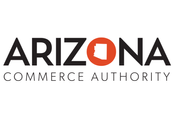
If there was any doubt about the wisdom of the state of Arizona’s investment in the New Economy Initiative, recent events have confirmed that the governor and the state legislature knew what they were doing.
It has long been a goal of state and local leaders to diversify the Arizona economy and to make it more resilient. The new year brought news of progress on that front.
After 70 years in operation, Meyer Burger Technology AG made the recent decision to build its first manufacturing facility outside Europe. One of the primary reasons Switzerland-based Meyer Burger chose Arizona and metropolitan Phoenix is because Arizona State University brings a diversified and talented workforce that can support the company’s production needs.
One of the first things CEO Gunter Erfurt did after the announcement was send an email to Zachary Holman, an associate professor as well as the director of faculty entrepreneurship within ASU’s Ira A. Fulton Schools of Engineering, saying, “We hope to further strengthen our R&D relationship with you in the future.”
What happened with Meyer Burger is precisely what the New Economy Initiative, originally proposed by the Arizona Board of Regents, is intended to do — use Arizona’s public universities as a catalyst for driving economic expansion in the industries of the future. Meyer Burger’s plan is to use technology to, in their words, “lead photovoltaics into a new era worldwide.”
Arizona will be one of the key places where that happens, and the New Economy Initiative is part of what makes it possible.
The New Economy Initiative plan is a coordinated response to attract high-tech industry, drive job creation and make Arizona families more prosperous. It promises to create 40,000 new high-wage jobs by 2041, increase economic output to $6.9 billion by 2032 and double the return on the state’s investment by the same year.
The result will be a new Arizona economy, less dependent on housing growth and tourism and more resilient to economic downturns, pandemics and whatever else the 21st century has in store.
“All of us — the citizens of the state, the legislature, the governor, chambers of commerce — all said, we have to do something and we have to do something collectively,” said Sally C. Morton, executive vice president of Arizona State University’s Knowledge Enterprise.
Morton advances the university’s research priorities and drives corporate engagement, economic development, global initiatives, strategic partnerships and technology transfer on behalf of the university.
“The state universities should play a central role in this,” she said.
The state legislature is providing $33.4 million in ongoing funding and $18.8 million in one-time funding to ASU for its part of the initiative in hopes of helping companies like Intel, Honeywell and Taiwan Semiconductor Manufacturing Co., which are already here, and attracting new ones like Meyer Burger.
The investment in ASU is focused on three areas:
- Growing the Ira A. Fulton Schools of Engineering. The Fulton Schools have hired more faculty and have been buying equipment, placing it and renovating space for it. The newest acquisition is an atomic layer depositing tool, which allows engineers to deposit materials on a computer chip in a layer as thin as one-millionth of a human hair.
- Focusing on student success and workforce development. This means training students in skills that are needed in a modern workforce and upskilling existing workers, as well as providing the means for people to move into the new economy. If someone wants the opportunity to transition into a career in microelectronics, there is a way to do it.
- Building five science and technology centers. These are physical centers with faculty and students, but also magnets for industry leaders to come and present their most pressing problem — and to find the help they need to do it.
ASU has already launched two science and technology centers.
- The Advanced Manufacturing Science and Technology Center focuses on the development of new technologies aimed at transforming manufacturing through 3D printing, robotics and automation, and new materials, with strong links to private industry support in aerospace, defense and space systems
- The Energy and Materials Science and Technology Center is a national research resource for advancing new energy materials and device technologies to market, growing industry engagement and workforce training.
As a research university, ASU faculty work on the cutting edge of technology — for example, on white lasers, medical devices and prosthetic limbs that can feel. Students are immersed in it, too, interning in industry or performing tasks like reprogramming a robot arm that a Raytheon supplier couldn’t complete, through the eProjects program.
“They find translational pathways,” said Kyle Squires, dean of the Fulton Schools. “They connect into industry partners that help industries see the horizon of where their sector is headed. It de-risks that process. It basically brings us into it. And that’s something universities are uniquely able to do.”
Squires expects not only that ASU faculty will work with industry, but that industry will participate at ASU. That’s what Meyer Burger is looking to do, and why the company’s leaders chose to be in Arizona to do it.
It’s only the early stages of the New Economy Initiative — Year 1. As ASU President Michael Crow is fond of saying, “We’re just getting started.”
To become a partner with the university on new economy projects or to learn more about the work ASU is doing on the New Economy Initiative, please visit impactarizona.asu.edu/new-economy-initiative or reach out to ASU’s Vice President of Corporate Engagement and Strategic Partnerships Grace O’Sullivan at Grace.OSullivan@asu.edu.


